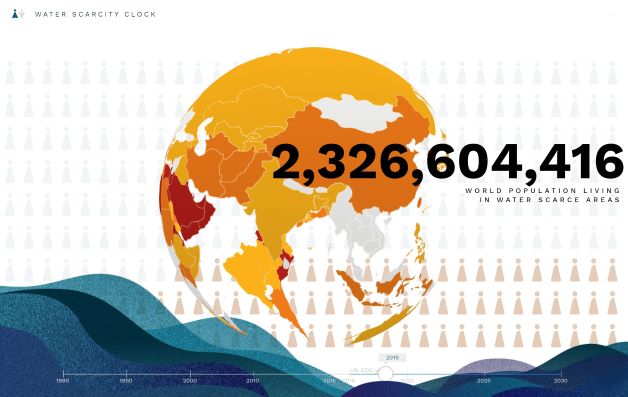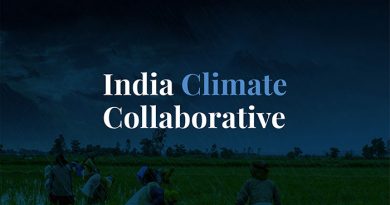Water Scarcity Clock: Real-Time Tool on Global Water Stress Now Available for All
 Screen Grab of the interactive Water Scarcity Clock
Screen Grab of the interactive Water Scarcity Clock
The water scarcity clock which was last month in Stockholm is a web-based tool that provides information relevant to development goals SDG6 (clean water and sanitation) targets. The online tool provides national-level data of water stress and varied levels’ of water scarcity.
Jointly developed by the International Institute for Applied Systems Analysis (IIASA), the World Data Lab, and the German development agency GIZ, Water Scarcity Clock is meant to provide governments and policymakers around the world predicted water stress and scarcity, in 2030.
The supply of sufficient clean water has been one of the toughest tasks as climate change, pollution and other region-specific factors have disrupted the availability of ground and surface water quality. According to IIASA ensuring universal safe and affordable drinking water will involve reaching about 785 million people who lack basic services, as well as improving accessibility to and safety of sanitation services for at least two billion people around the world.
Water Scarcity Clock fills the information gap and is designed to provide decision-makers with reliable, science-based data and information to inform activities around water policy formulation, infrastructure planning, allocation and monitoring of resources, and the evaluation of existing programs and projects related to sustainable water management in their countries.
“The water scarcity clock is a striking visual tool that helps policymakers, the media, and the broader public to get a quick impression of what water scarcity is all about and how fast it is affecting more and more people globally because of population growth and climate change. This is a great achievement because it makes a scientifically complex matter accessible for all,” said Robert Burtscher, a liaison and stakeholder engagement professional with the IIASA Water Program.
The tool is able to provide granular and actionable information on water scarcity towards the achievement of clean water and sanitation for all people. Users can see which shares of the population live in areas where water availability is less than 500 m3, 1,000 m3, and 1,700 m3 per person. A country or region is seen as experiencing water stress when annual water supplies drop below 1,700 m3 per person per year. At levels between 1,000 and 1,700 m3, periodic or limited water shortages can be expected. When water supplies drop below 1,000 m3, the country faces water scarcity. The water data, including water availability and the water scarcity index calculation for the current situation, along with projections up to 2050, is integrated into the interactive web tool.
It has been found that water stress is going to affect 1 person per 4 by the year 2050. It is already a serious issue in 22 countries, particularly in North Africa and Western, Central and South Asia, where more than 70% of the population currently experiences water stress. The impact of water stress will not only be felt by less developed parts of the world, in fact, it is already a concern in industrialized countries like Australia and Cyprus.




